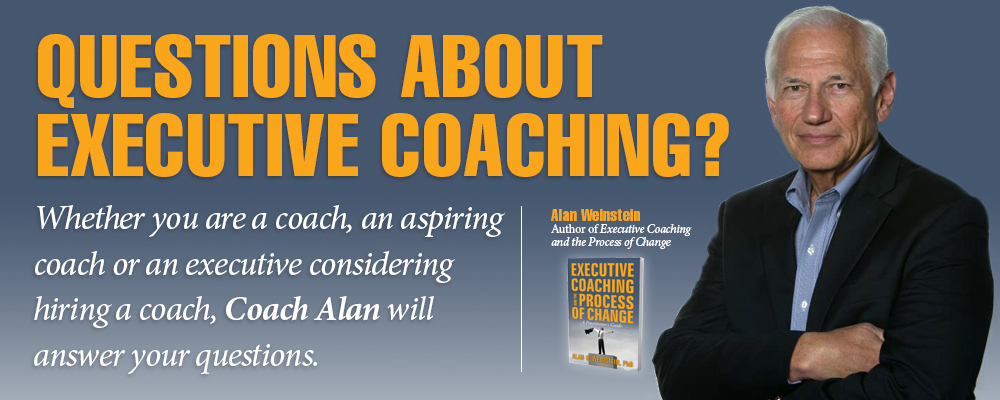Almost 90 percent of businesses are owned or run by families. Any small business owner can tell you how difficult it is to operate a business. Adding a family relationship to a business introduces an emotional dimension that complicates matters. With an unprecedented number of family businesses currently going through an intergenerational change, how can an executive coach offer help in making it an orderly transition process for them? This is the subject of this month’s blog.
Richard Sr. owns and operates a successful job shop, making parts for large companies like General Electric and Boeing. Sales are largely through representatives who have strong relationships with the customers. Initially, the sales rep “opens the door” for a sales engineer from the company to design the parts. Once the part specifications are complete, the sales rep then handles the relationship. Thus, the sales rep becomes a critical player in the sustainability of the account. In this instance, the sales rep is in his mid-70s and showing signs of slowing down. His relationships with the customer run deep, and he is highly compensated by the company to maintain this book of business. Richard Sr. is concerned and caters to the sales rep, hoping for an eventual smooth transfer to a direct sales person from within his company. He fears, however, that raising the topic of transitioning the sales business would be perceived as a threat or an insult to the sales rep, and he could retaliate by moving the business to other suppliers. So, he has decided to do nothing, leaving the account as is.
Richard Sr., who is in his early 60s, is also in the process of an overall succession plan to transfer ownership and management of the entire business to his three sons, one of whom is currently sales manager and heir apparent to become the president. This son, Richard Jr., differs with Richard Sr. on the sales rep relationship described above. He believes the sales rep is damaging the relationship and milking the company for commissions that he does not deserve. His approach would be to negotiate a succession plan with the sales rep that would turn over the sales business to one of his sales people. As stated earlier, Richard Sr. believes this could jeopardize the business. He admits his response is based on fear, but knowing the sales rep well, he believes his fear is not entirely unfounded: this is a real concern to him.
The coach in this situation is working with both the father and son about succession. When this issue came up, the coach believed it would be an excellent opportunity to process for two reasons. First, it can bring two very different perceptions of the sales rep relationship with the customer out into the open and try to understand how to move forward. Second, it is an opportunity for father and son to learn how to resolve differences, giving each confidence in the successful transfer of management elsewhere within their company.
So, how should the coach approach this situation?
The first coaching goal is to make sure both father and son are seeing the same facts. In this case, the issue came down to Richard Sr.’s fear of losing the business and Richard Jr.’s perception that the sales rep was no longer revered by their customers and was losing traction within the company. Over the years, the business had become more technical, and the company sales engineer had fostered strong relationships with engineering and manufacturing executives within the customers’ businesses. Richard Jr. felt that the company was now in a good position to negotiate a succession plan with the sales rep. Getting both men in the room to discuss the dilemma helped each to understand the other’s position. They reframed the question from when to transition to how to transition. Richard Sr. was able to reframe his dilemma by altering his approach to the sales rep. He reasoned that if he was thinking of succession, he had a common issue with the sales rep–that being the orderly transition of the business. This common framework should open the dialogue, whereas up to now, it was being suppressed by Richard Sr.’s fear. He also decided to frame his dialogue with the sales rep from the perspective of what was best for the customer.
It is interesting to note that the dialogue with father and son was rational and without the discord that often accompanies father and son differences. The two men were searching for a way of approaching the sales rep that was less threatening to him. They also agreed that Richard Sr.’s concern was real and should not be discounted. In searching for a solution, both men gained confidence: Richard Sr., in his son’s ability to analyze a complex relationship, and Richard Jr., in his father’s orderly transition plan for him to take over the business.
Retiring business owners invariably have concerns about the capability and commitment of the next generation in taking over the business. By contrast, the heir to the retiring business owner is often impatient and anxious to make changes to move the company forward, seeing the current owner as out of date and resistant to change. These differences are not insurmountable and do not have to derail the orderly transition of leadership from one generation to another. Coaching can definitely help to facilitate an orderly transition.
